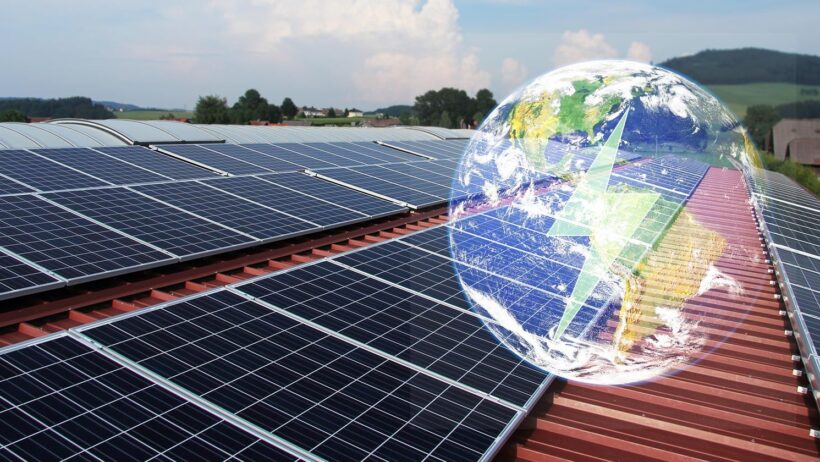In an era where technological advancements dictate our daily lives, the electricity consumption of electronic devices has garnered considerable attention. The allure of gadgets—from smartphones to laptops—fuels our fascination, but this enthusiasm must be tempered with an awareness of their energy consumption implications. As we navigate this digital landscape, understanding the energy demands of our devices is crucial in mitigating our carbon footprint.
The intrinsic relationship between technology and energy consumption presents a paradox. On one hand, innovations that have transformed communication, entertainment, and work efficiency are almost indispensable. On the other hand, the sheer volume of energy consumed by these devices often goes unnoticed. According to recent statistics, digital technologies account for a staggering amount of global electricity usage, which underlines the urgency for energy-saving strategies and a sustainable approach to tech consumption.
One of the primary observations regarding energy consumption in tech devices is that many users are oblivious to the energies these items consume when left powered or in standby mode. For instance, devices such as laptops and televisions can consume as much energy in standby mode as they do when in use. This phenomenon, often termed “phantom load” or “vampire energy,” signifies that unplugging devices when not in use is a simple yet effective tactic to minimize energy waste.
Moreover, actively managing the energy settings on devices can lead to substantial energy savings. By adjusting the power settings, users can optimize performance while minimizing energy consumption. For example, enabling sleep mode on laptops or reducing screen brightness on smartphones can dramatically decrease electricity usage. These small modifications not only contribute to energy conservation but also prolong the lifespan of the devices, thereby reducing electronic waste in the long term.
In the realm of mobile devices, the potential for energy conservation expands further. Smartphones today feature a myriad of applications that monitor and manage energy usage efficiently. Users can employ these apps to gain insights into their energy consumption patterns and to identify specific areas where they can reduce usage. Simple habits, such as disabling location services when not needed, closing unused applications, and utilizing Wi-Fi instead of mobile data, can significantly decrease a device’s energy footprint.
In addition to user behavior, manufacturers play a pivotal role in enhancing energy efficiency in tech devices. The advent of energy-efficient technologies, such as LED displays and optimized processors, facilitates lower energy consumption while maintaining performance. Certifications like ENERGY STAR serve as benchmarks for consumers, providing assurance that the devices they purchase have met stringent energy efficiency guidelines. It signifies a collective movement towards sustainable tech development, where companies are beginning to prioritize eco-friendly practices.
Another critical aspect to consider is the charging habits of device users. Charging devices overnight or using non-certified chargers can result in inefficient energy usage. Utilizing smart chargers with timers or automatic shut-off features can help users develop more efficient charging routines that align with their energy-saving objectives. Additionally, embracing wireless charging technologies, when designed to be energy-efficient, can streamline the energy transfer process, further reducing energy waste.
The impact of cloud computing also deserves attention. As computers become equipped with more powerful processors and storage capabilities, the demand for cloud services surges. However, this convenience comes with its own energy costs, predominantly in the data centers that power these services. Data centers consume a significant amount of electricity for both processing and cooling. Transitioning to eco-friendly data centers that utilize renewable energy sources can alleviate some of this burden and propel the tech industry toward greener horizons.
The fascination with technology is deeply woven into the fabric of modern society. The convenience, connectivity, and unprecedented access to information offered by tech devices create an irresistible lure. Nonetheless, this dependency must be tempered with awareness regarding the environmental ramifications of energy consumption. Every aspect, from the devices we choose to how we use and care for them, contributes to our ecological footprint, which cannot be ignored.
It is imperative for users to not only embrace energy-efficient practices but also advocate for sustainability within the tech industry. By supporting companies that prioritize energy-efficient production and responsible recycling of old devices, consumers can drive the market toward greener practices. The collective consumer demand can inspire corporations to focus on innovative design approaches that merge high performance with low energy consumption.
As individuals, we hold significant power in curbing our tech-related energy consumption. Understanding the dynamics of our devices and their energy usage empowers us to make informed decisions. With this knowledge, users can take conscious steps toward reducing their energy reliance, ultimately contributing to a collective endeavor to combat climate change.
In conclusion, energy-saving on tech devices is a multifaceted approach that necessitates a dual focus on individual behaviors and industry practices. With the increasing integration of technology into our lives, fostering a culture of sustainability is crucial. By prioritizing energy efficiency and remaining conscientious consumers, we can navigate our technological landscape without compromising the environment. Harnessing the power of technology for good while simultaneously safeguarding our planet is not just a possibility—it is an urgent necessity.








